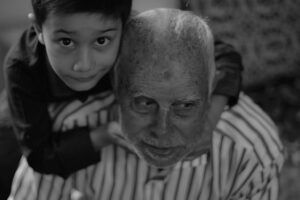There are many theories about health that are passed down from mother to child. Are they true? Here’s some more info on the veracity of six common ones, sent in by a reader.
There are more than a dozen health tales told by old wives which have been exposed more often than not over time. These health tales have been passed across generations and are still being peddled in a 21st generation such as the one we are in at the moment. The first of these old wives tales is that:
1. Vitamin C cures Common Cold:
This is an old generation tale that goes back to the early 70s brought about by claims made by a brilliant scientist Linus Pauling who was a two-time Nobel Prize winner. It was quite a promising theory he had been investigating for several years but ended up with no concrete research to support it and got denounced by the medical establishment for lack of evidence.
This same theory sufficed in 2007 when an extensive review of over 60 years of research revealed that an intake of about 200mls of vitamin C two to three times daily cut short the time spent being sick from a cold from around twelve to eleven  days per year.
days per year.
The belief was that good health consisted of adequately supplying the body with the right balance of molecules required for dynamic biochemical reactions. It has further been discovered by researchers that the vitamin C is an antioxidant which repairs body cells by rebuilding the molecules damaged during daily activities.
2. Caffeine Stunts Your Growth
This old health tale has not been proven by any verifiable evidence nor studies to show a significant relationship of cause-and-effect between the human caffeine intake and stunted growth. On the other hand, this old health claim may not be totally wrong. Caffeine is a stimulant strong enough to excite the human nervous system and an available supporting argument is that caffeine directly affects HGH production and limits growth, but has no scientific backing.
This is because when you consider other known factors (nutrition, heredity) that affect growth, one might be dissuaded from towing this old health tales line of thought. However, research has it that caffeinated beverages have over time increased in popularity and reports revealed that coffee sales rose in recent years to 9 percent in 2010-2011, with sales exceeding $4 billion worldwide.
With the consistent intake of caffeinated drinks on a daily basis, people are growing taller, so what do we say as regards this old wives health tale on caffeine being responsible for stunted growth? However, this old tale may have warranted a closer look if the reverse had been the case.
3. Eating Sugar Makes Kids Hyper
Well, this old health tale like some other myth seems to have the reasonable semblance of validity to sound legitimate. This is because sugars are pure calories rapidly digested into the bloodstream. This causes a rush in activity if there’s a rush in the level of energy intake into the body. Lots of evidence from case scenarios have often been cited like of kids at a party, allowed to binge on cake, consume sugary drinks, and cookies.
Ergo, sugar is said to be responsible for their behavior. However, we understand that the science of sugar metabolism world over tells a much different story. When sugar reaches the bloodstream, it goes first to the internal organs and muscles requiring it for immediate use. So, at such kiddies’ party, it’s simple excitement that inspires the kids’ boisterousness; the intake of sugary food just fuels it.
4. Eating Carrots Improves Your Eyesight
This old health tale most often doesn’t hold true, because it has not been scientifically proven.
Healthy consumption of carrots may improve your eyesight but not correct it unless the problem is caused by vitamin A deficiency. Vitamin A is highly essential to keep the eyes healthy and in good shape. This consumption is very important because it is well known that the human body cannot produce Vitamin A required by the eye to keep it highly effective and functional.
Our diet must include meals such as liver, fish, meat, and beta-carotene (from carrots) that provide the much-needed vitamins essentially needed by the eyes.
However, carrots contain a substance called beta-carotene, which is an effective chemical compound that provides vegetables with their colorful hues. It’s also known as a pro-vitamin, from which the human body is known to synthesize vitamin A.
5. You Should Starve a Fever and Feed a Cold
This old health tale is possibly based on generational humor, an idea that sound mental and physical health is dependent on the balance of 4 body fluids, called the black bile, yellow bile, blood, and the phlegm.
Fasting was also prescribed in other to help starve a fever and works in such a way as to slow down what appeared to be an extreme case of over metabolism. The interesting part is that the mouth full of phlegm was associated with depressed spirits and metabolism with remedy being to feed the bodily furnace with food, which was to help lift the spirit. Amazing, right? When one is down with a cold or the flu, the body needs essential nutrients from a balanced diet as well as sufficient energy from ample calories to help fight off infections, especially within the early stages.
However, either under-eating or over-eating does not offer any advantages. Instead, a healthy balanced diet is what you should look for.
6. You Lose Most of Your Body Heat Through Your Head
This health old wives tale came with the warning that you can lose forty to forty- five percent of your body heat from an exposed head. How true that tale was in time past remains to an unproven statement of fact, but the major reasons given to support this tale were the deficiency of insulating fat as well as the nearness of major blood vessels to the surface.
However, it was suggested that in a human body at rest, 7 to 10 % of its heat loss occurs through the head. Also, having a work or exercise session helps increase the body’s main temperature and enables the constant flow of blood to the brain. So at this initial stage, more heat is expelled through the head, possibly up to 50%, if not more.
During activities, there are blood vessels close to the surface of the skin inside the body also dilate and this allows more blood flow throughout the body while reducing the flow to the brain. This proximity of vessels to the skin protects you from overheating by keeping the blood cool enabling only about 7% of heat loss through the head. On the other hand, it is still advisable to keep the head covered in cold weather, but it isn’t out of place to also keep other body parts covered as well.
So, as you see, some of these things are true, some partially true, and some wrong. There’s more truth to these old wive’s tales than one may think.
See my disclaimer.




